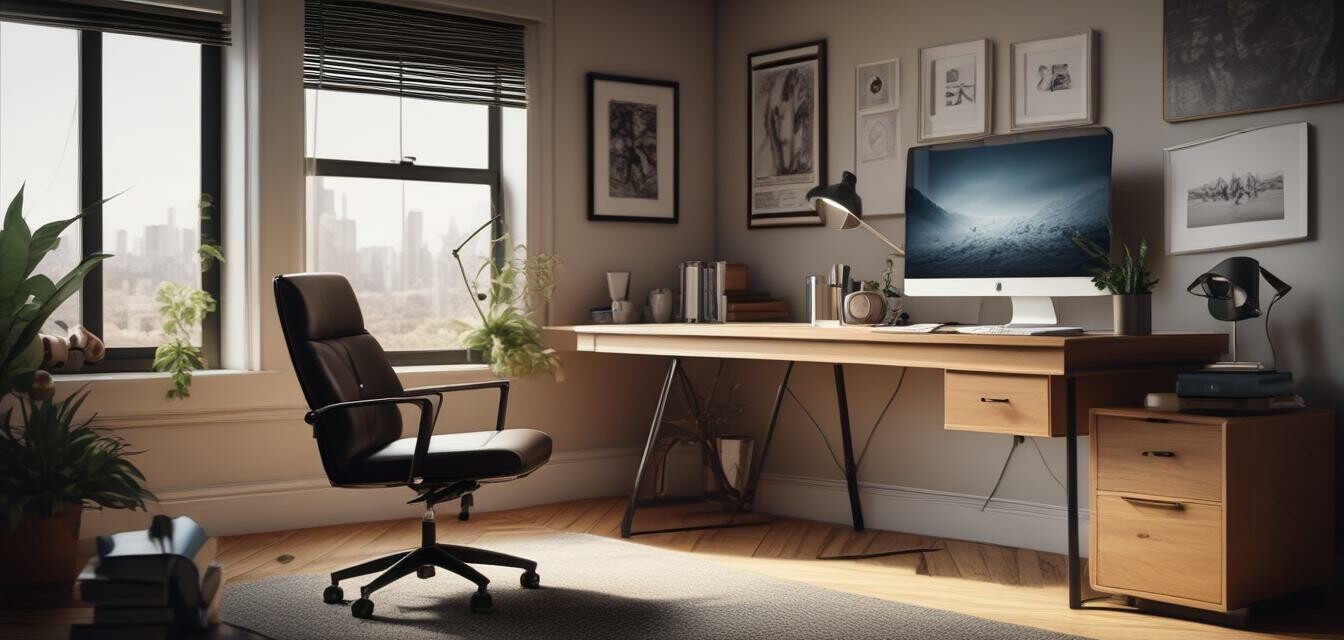
The future of home office furniture post-pandemic
Key Takeaways
- Remote work is becoming a long-term trend, influencing furniture design.
- Ergonomics and comfort are prioritized in modern home office furniture.
- Sustainable materials are gaining popularity among consumers.
- Multifunctional and space-saving designs are essential in small areas.
- Smart furniture solutions are on the rise to embrace technology effectively.
The pandemic has altered not only how we work but also how we think about our workspaces. As remote work becomes a fixture in many people's lives, the demand for innovative and functional home office furniture is higher than ever. This article explores the evolving trends in home office furniture design and functionality as we step into a post-pandemic world.
Shifts in design and functionality
Home office spaces have evolved dramatically over the last few years. One of the most significant shifts is the emphasis on creating a comfortable and aesthetically pleasing work environment. A well-designed workspace can boost productivity and well-being.
| Trend | Description |
|---|---|
| Ergonomics | Focus on ergonomic chairs and desks to improve posture and comfort. |
| Sustainability | Increased use of eco-friendly materials and sustainable manufacturing processes. |
| Multifunctional furniture | Furniture that serves multiple purposes, ideal for small spaces. |
| Smart technology | Integration of smart features in furniture for enhanced workspace efficiency. |
The importance of ergonomic design
As more people work from home, the demand for ergonomic furniture has significantly increased. Ergonomic office products are designed to minimize discomfort and maximize efficiency, catering to the needs of workers in a home setting.
- Ergonomically designed chairs reduce strain on the back and neck.
- Adjustable desks allow users to switch between sitting and standing, promoting movement.
- Properly positioned monitors prevent eye strain and encourage better posture.
Emphasizing sustainability
Sustainability has become a vital consideration for consumers when purchasing home office furniture. Eco-friendly choices reflect a commitment to the environment and social responsibility. Key trends include:
- The use of recycled materials and wood sourced from sustainably managed forests.
- Furniture that is built to last, reducing the need for frequent replacements.
- Brands that prioritize sustainable practices in production and packaging.
Space-saving solutions for small areas
The rise of remote work has led to an increase in individuals setting up home offices in small spaces. As a result, there is growing interest in multifunctional and compact furniture that maximizes every inch of space.
| Type of Furniture | Function | Space Efficiency |
|---|---|---|
| Wall-mounted desks | Foldable surfaces for work | Utilizes vertical space |
| Storage ottomans | Seating & storage solution | Compact and functional |
| Convertible desks | Allows adjustment for various tasks | Adaptable to user needs |
Smart furniture trends
Technology continues to transform how we work, and smart furniture is leading the charge. This type of furniture enhances productivity while seamlessly integrating into modern lifestyles.
- Desks with built-in charging ports and wireless charging capabilities.
- Smart lighting solutions that adjust according to the time of day.
- Apps and connectivity features that track productivity and wellness metrics.
Adapting to the new normal
As remote work remains prevalent, the future of home office furniture will continue to evolve. The blend of comfort, sustainability, functionality, and technology will shape the designs to come. It’s essential for both consumers and manufacturers to stay informed about current trends and adapt accordingly.
Conclusion
In conclusion, the future of home office furniture reflects a profound shift in how we visualize our workspaces. With ergonomics at the forefront, a focus on sustainable materials, and the integration of multifunctional designs and smart features, the landscape of home office furniture is indeed changing. Staying up-to-date with the latest trends will help you create a workspace that is not only efficient but also a source of inspiration and comfort.
Pros
- Improved productivity through better design features.
- Increased comfort with ergonomic furniture options.
- Eco-friendly options contribute positively to the environment.
Cons
- Higher initial cost of quality ergonomic pieces.
- Limited choices in some small-space furniture.
- Dependence on technology can lead to distractions.
Further reading and resources
For more insights into effective home office setups, check out our buying guides. For tips on enhancing your workspace decor, visit our decorative accessories section.